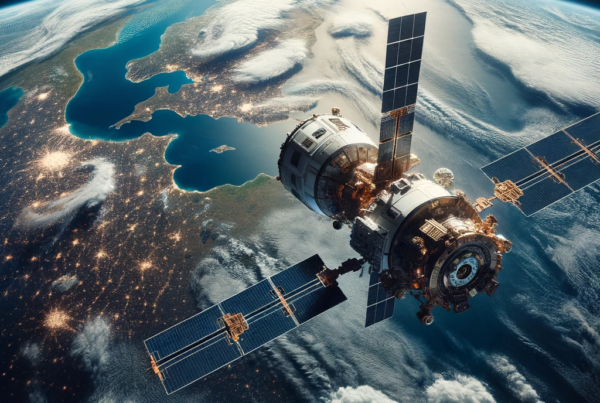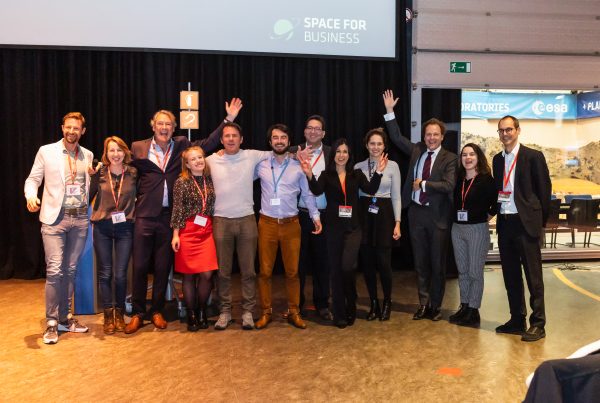As billionaires fuel fierce competition in the sector, the Space industry has seen tremendous growth in the past decade. Thanks to incredible footage of reusable rockets, like SpaceX falcon 9 performing almost unreal-looking landings on landing pads and drone ships, rocket launches have recaptured the public’s attention in ways we have never seen before. In fact, some companies, such as Virgin Galactic and Blue Origine, will soon be offering commercial space flights, and Nasa has announced their plans to open up the International Space Station for tourists to visit.
We could not possibly overlook the positive impact that the private sector has had on the development of the industry as a whole this past decade. We are seeing a significant increase in rocket launches year on year, with costs ever-decreasing over time and space becoming more accessible than ever. However, with Elon Musk shooting out his own Tesla Roadster into space in a marketing stunt, all while space debris keeps on growing, “we should also consider the impact we as an industry might be having on our already weakening environment,” says Andreas Wittmer, one of the program directors for the Space for Business Programme at the University of St.Gallen, and managing director of the Centre for Aviation Competence
The effect on our atmosphere
First, you should know that about 95% of the mass of most rockets is just fuel. Now that makes for a lot of fuel given the sheer size of these things, but what does burning this much fuel mean for the environment?
Rockets fueled with liquid kerosene, like the SpaceX Falcon 9 for example, are responsible for the development of a substance called black carbon in the outer edges of our atmosphere. It forms a thin layer (like a cloak) that shields the atmosphere from sun rays while also heating up the stratosphere. This eventually leads to significant depletion of the ozone layer. although the magnitude of these effects at scale is not yet known. What we do know, however, is that the chemicals can potentially stay up there for approximately three to five years. In all cases, this can lead to various geological problems like tropical storms, for example, as well as an increase in UVB radiation as a direct consequence of ozone depletion, which is sure to have drastic effects on our health.
As companies keep rocket data confidential, we really do not know enough to say for sure what mass rocket launches would do to our planet in the long term, and unfortunately, as Andreas puts it “limited progress in establishing rules and norms of behaviour have been made so far”. As space missions have been deemed matters of national /security in most cases, little has been done in order to establish and encourage an orderly development framework for them. It seems as though private operators are rather free in doing whatever they like, but what consequences does this have to society? We may feel we do not launch enough rockets to be concerned with different challenges that come with them just yet, but over time this will likely become a significant issue.
Space debris and the lack of regulations
According to Andreas, an important question that still needs answering in regards to the rapid increase in space launches and satellites in orbit is who will be held responsible for taking care of cleaning up the accompanying space debris. Since Sputnik 1 became the first human-made object to orbit the Earth in 1957, around 11,000 more satellites have been launched. Moreover, we anticipate almost seven times that number to join them over the coming decade. One thing that is often overlooked, however, is that there are also an estimated half a million pieces of debris in orbit. If we do not start regulating the accumulating junk soon enough, the threat to functioning infrastructure in orbit could be immense. If only one satellite is damaged, it could affect a huge network of satellites by creating a cascading chain reaction of other satellites getting damaged by the debris, which in turn would affect a variety of functions that are vital for us on earth – like global navigation and communication systems, energy and water supply management, broadband internet, and more.
According to Andreas, “we can observe a lot of parallels between the space industry today and the aviation industry in the “70s/80s”. Around that time, the aviation industry was deregulated and privatized, similar to where we are with the space industry now. This allowed the various private players in the sector at the time to pretty much operate as they pleased. Consequently, we saw new business models emerge, enabling the democratization of the industry. One important thing to remember, however, is that this type of behaviour is also what led to many of the environmental challenges we now face in the aviation industry, as well as heavy regulation of the sector. “I believe that the response of the public will eventually lead us to similar questions that arose for the aviation industry – what are the negative effects on the environment – and what policies will arise from that?” says Andreas.
He also notes that although free markets are key, some rules and standards of operation are to be established. However, these should not pose a threat to innovation in the industry but instead enable it in a sustainable way. This is why he advocates for the industry to be smart in its development and make steps towards self-regulation – before top-down rules lead to negative economic and market effects. The problem with interference from external regulation is that there is often a discrepancy between the industry’s understanding of the technology and that of external governing bodies – which are usually not on the same page.
A bright outlook
One way we can help prevent these worst-case scenarios from coming true is through education. We need to trigger people into thinking long-term about the directions we wish to take with this industry. Such challenges demand smart, entrepreneurial, ecosystem-wide solutions and the people to implement them.
One of the topics in module 1 of the Space for Business Programme, taught by Andreas himself, is the Space System. It concerns itself with exactly those topics that we need to consider as we move forward in the space sector. He explains it helps a lot to understand these contradictory pressure points such as the economy, society, environment, technology and policy side of the industry. He says: “we can’t just have an economic outlook. We need to pivot our behaviour from only thinking about what could be possible technologically and economically speaking, to considering the sustainability aspect as well. We can do amazing things up there, but to make sure we can move forward, we must move smartly and sustainably, take charge, and take responsibility for our actions, or we will likely hit a brick wall at some point.”
Though there is no real framework yet for what to look out for and what to work towards, we can learn from the aviation industry. Andreas says: “the space industry is still very much in its early age. We shouldn’t make the same mistakes we have made in the past already. This is our chance to make it right from the beginning. Now’s the time to act.” That’s why in the Space for Business programme, we focus on a systemic management approach providing participants with the right framework to look at the space market from an economic, societal, environmental, technological and policy point of view. We believe that seeing the market and innovations within this framework will help move the whole industry in a sustainable direction.
The final registration deadline is approaching and we wouldn’t want you to miss out. If this sounds interesting to you, register now and gain access to all our upcoming pre-programme activities. Applications for the programme are open until February 13th 2022.






